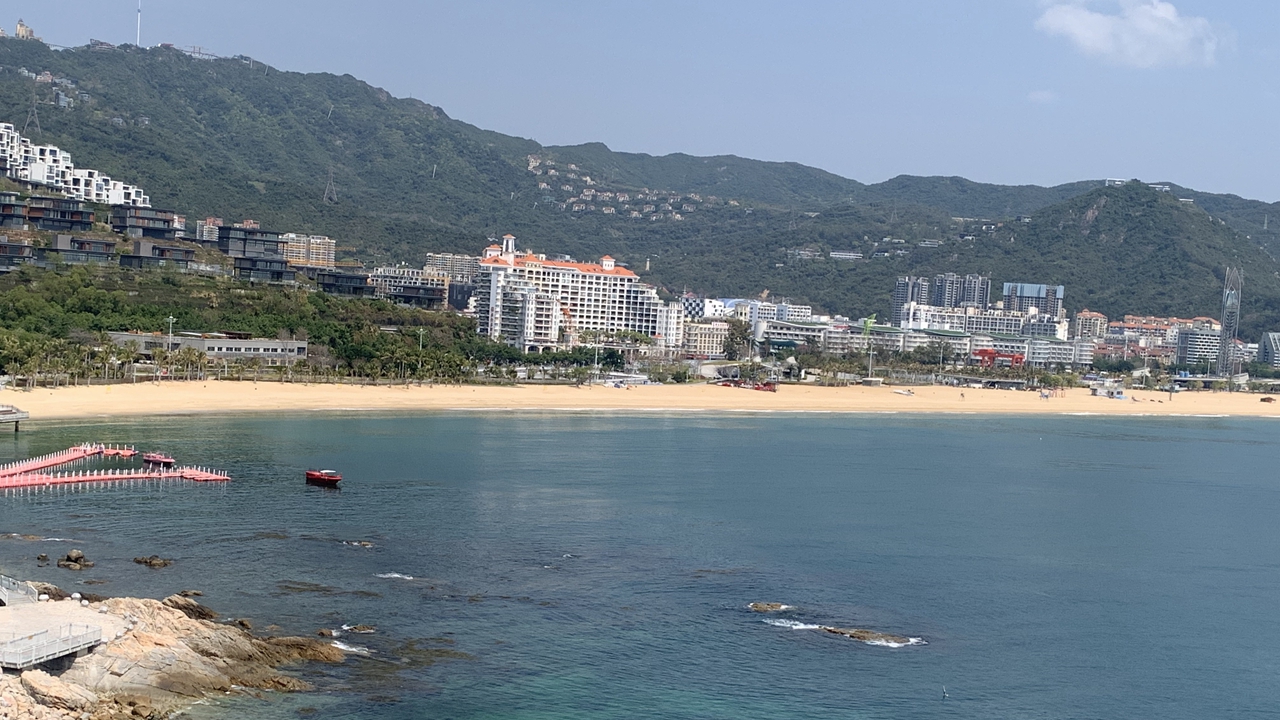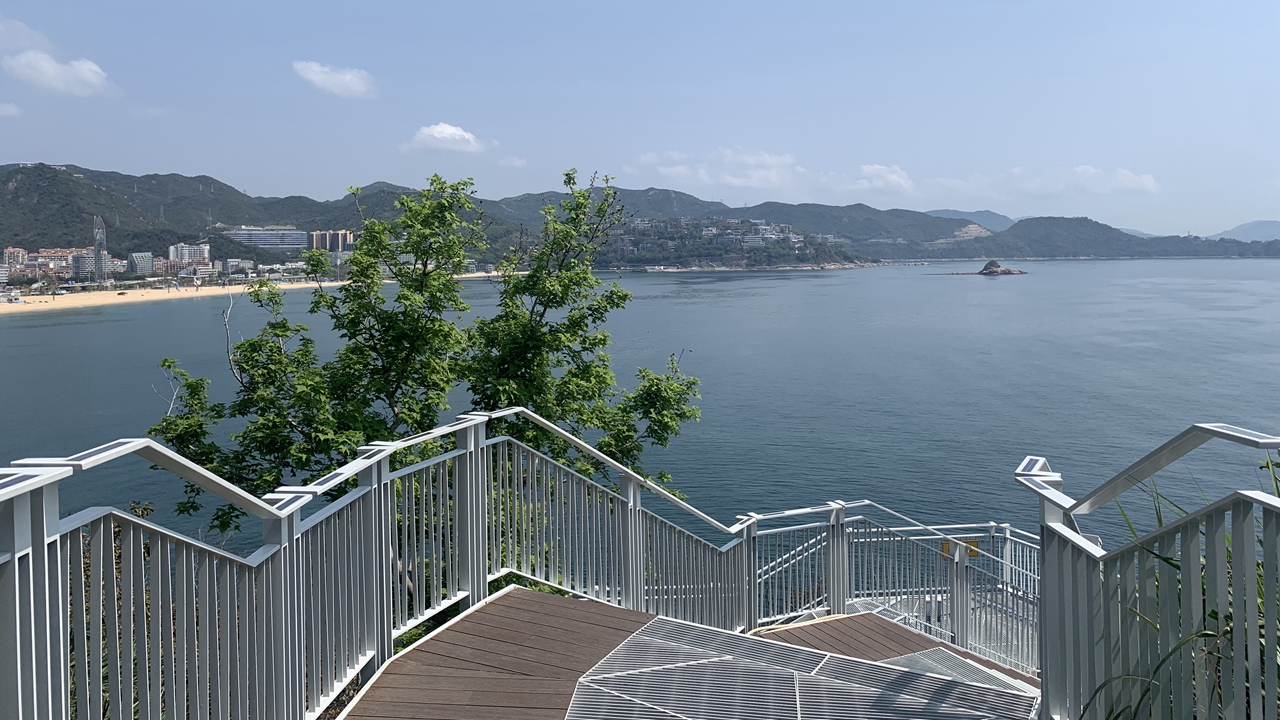Dameisha, a sample of zero carbon community
At Dameisha Community in Yantian District, the practice of building a near-zero carbon community has been used as a typical example of China’s efforts in ecological conservation and protection at the sideline activities of the 27th Conference of the Parties of the United Nations Framework Convention on Climate Change (COP27) that concluded in Egypt last week.
In August last year, Dameisha Community in Meisha Subdistrict was chosen as one of three communities in Shenzhen to pilot the near-zero emission program. A month before that, Vanke Foundation signed an agreement with the Yantian government to turn Dameisha Community into a demonstration area for carbon neutrality.

A view of the Dameisha beach neighborhood in Dameisha Community, Yantian District. Photos by Zhang Chanwen
At Vanke Center in Dameisha, headquarters of Vanke Co. Ltd., kitchen waste is handled unusually. Kitchen and canteen leftovers, after sorting, drying and grinding, are taken to a small 70-square-meter room nearby called the Black Soldier Fly Station, established by Vanke Foundation in 2019. At the station, the in-house black soldier fly larva are raised and deployed to feed on all the waste. The station can also handle up to 200 kilograms of kitchen wastes from three canteens at Vanke Center in 24 hours.
A black soldier fly larvae can consume kitchen waste 200,000 times their weight in its 7-to-9-day growth. During its 25-day life cycle, it can produce antimicrobial agents — a good protein source for fish or animal feed. The larvae’s excrement can also be used as fertilizer, which has been used for planting flowers at Vanke Center complex’s rooftop garden.

A coastal footpath in Dameisha.
At Vanke Center’s rooftop, the solar power system and rooftop garden can provide not only shelter for birds and insects, but also an area for farming and ecological education. The area has reduced its energy consumption via photovoltaic power generation and storage, application of energy-saving materials and intelligent power use technologies.
“The micropower grid digital control system has been used in the first phase of Vanke Center’s renovation project, which covers 16,000 square meters. The use of green electricity at the center has reached 85% of the total electric consumption,” said Xie Xiaohui, executive vice director of the foundation. When the project’s second phase is completed in 2023, the area aims to reach 100% use of green electricity.
The practice of zero carbon emission community attracted wide participation in Dameisha Community.
At the Yunding Tianhai housing compound, garbage classification practice by using intelligent garbage classification equipment has been a routine of households.
According to Yu Kai from Meisha Subdistrict Office, the subdistrict has built zero waste full scenario applications in a pilot program at three-star hotels and 25 housing compounds.
Using a community carbon management and monitoring platform, a pilot program for the Yantian branch of the Shenzhen Municipal Ecology and Environment Bureau, as well as the city’s power supply bureau, can learn about the time, behavior and electricity use habits of community residents with the help of new technologies such as big data and cloud algorithm. Based on the data, authorities can provide residents guidelines on how to optimize electricity use and practice low-carbon living.
Coral reefs are important habitats for marine life and offer a compelling case of risks associated with climate change. In recent years, the size of coral reefs in Meisha area increased, thanks to the effort from the Yantian government and nongovernmental organizations devoted to coral reef farming. Recently, Yantian Ocean Ecology Protection and Service Center, headed by Yang Xuchong, an environmental protection volunteer, planted a total of 15,000 coral seedlings and cleared 7 tons of underwater trash.
“We have coral groups, and they are thriving. It shows our marine ecology is turning better,” Yang said.
Meisha Subdistrict is rich with forest resources whose coverage has reached 69.9%. According to Zhang Yuke, a volunteer in river protection, the subdistrict is restoring the lake park’s wetland, which covers around 33,000 square meters. After restoration, the complete ecological system will provide a habitat for endangered fish species.